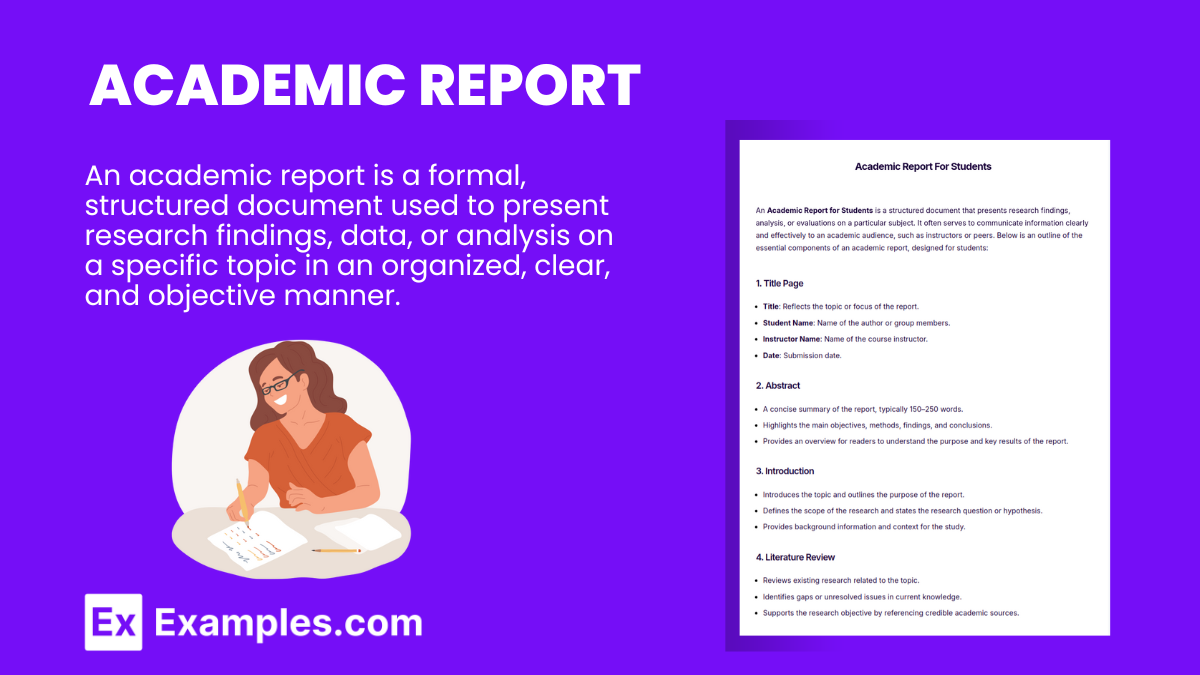10+ Academic Report Examples to Download
As a way of evaluating a student’s logical capacity, comprehension level and writing skill, some professors require their students to write a document presenting their ideas, thoughts, analyses, etc. about a certain topic. Other than writing an essay, the students can also use a report in order effectively present their objective deductions and findings.
A formal report is another way of presenting facts and analysis you have gathered from your readings about a certain topic. In requires thorough research, readings, rationalizing, analyzing and making a point. It goes beyond that of an essay, it is more than just arguing a position and drawing conclusions, although a report can also do that, it must comprehensively present pertinent facts and information in order for the reader to see the subject in new light.
As you may know, report writing is a very useful skill not only academically but also in your future career. Not only does it hones your writing skills it also improves your analytical and critical thinking skills since it urges you to come up with objective findings based on facts. Therefore, it will surely help you be good at whatever job you wish to pursue in the future; no employer says no to a critically and analytically adept individual. You may also see marketing report examples.
What is Academic Report?
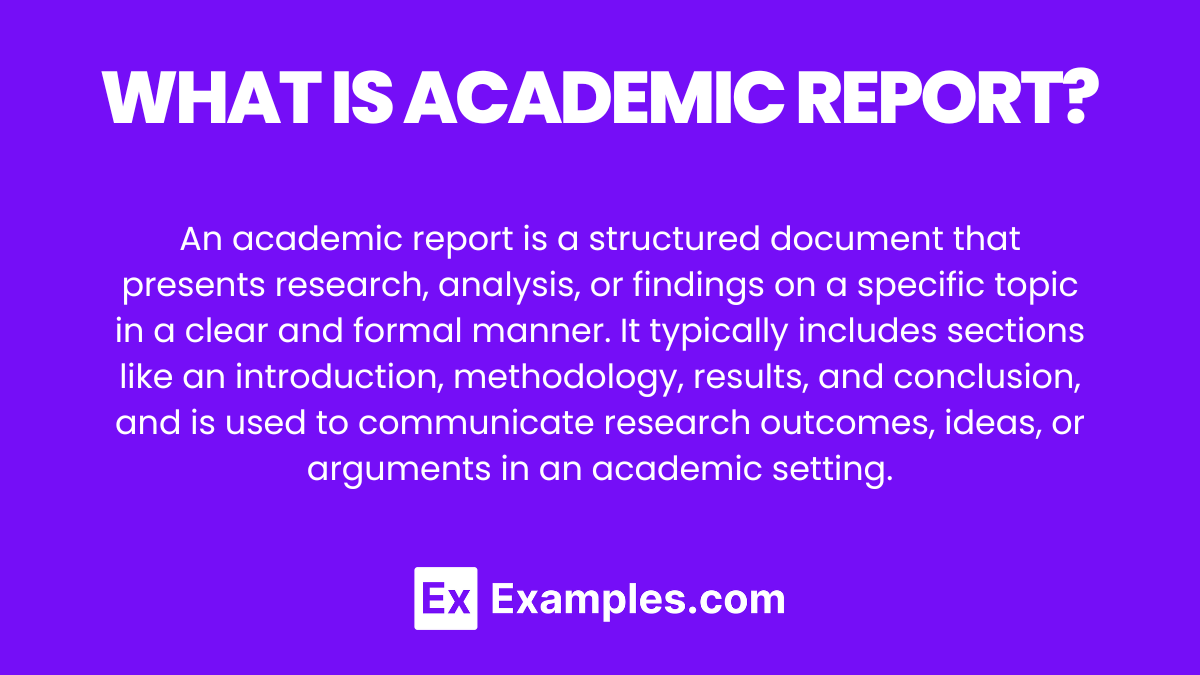
Academic Report Bundle
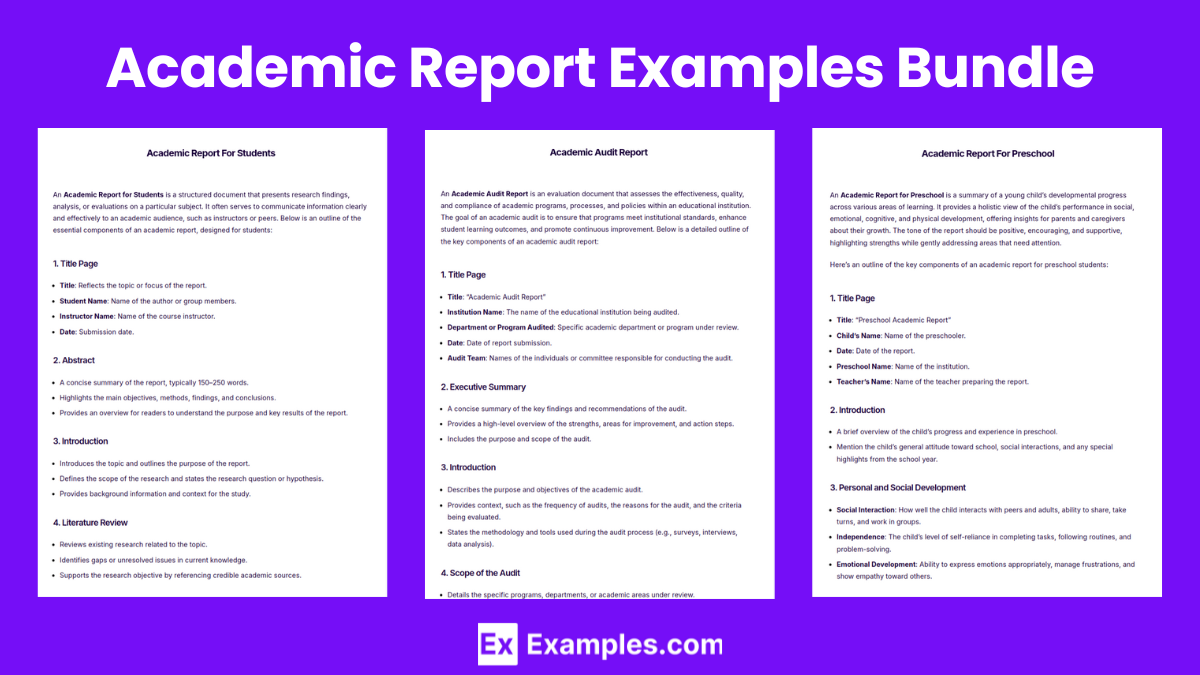
Download Academic Report Bundle
Academic Report Format
Title Page
Title of the report
Author’s name
Date of submission
Institution name
Course title (if applicable)
Instructor’s name (if applicable)
Table of Contents (optional)
- List of headings and subheadings with corresponding page numbers.
Executive Summary (Abstract)
Brief overview of the report’s key points.
Summary of the purpose, methods, results, and conclusions.
Typically, 1 paragraph to 1 page in length.
1. Introduction
- Background information: Provide context and introduce the subject matter.
- Purpose: State the purpose and objective of the report.
- Scope: Define what is covered and what is excluded from the report.
- Thesis or hypothesis: Present the main argument or hypothesis.
2. Literature Review (if applicable)
- Summary and analysis of existing research relevant to the report’s topic.
- Highlight gaps, debates, or key findings in the literature.
3. Methodology
- Data collection methods: Explain how the data or information was gathered (e.g., surveys, experiments, case studies).
- Procedures: Provide detailed steps on how the research was conducted.
- Tools and materials: List any tools or materials used for data collection.
4. Results
- Findings: Present the data or information gathered from the research.
- Tables and graphs: Use visual aids to represent data effectively.
- Analysis: Interpret the data and highlight key patterns or observations.
5. Discussion
- Interpretation of results: Discuss what the results mean in the context of the research question.
- Comparison to literature: Relate your findings to previous research discussed in the literature review.
- Limitations: Mention any limitations of the study or research design.
6. Conclusion
- Summary of findings: Recap the key points and results of the research.
- Implications: State the significance of the findings for the field.
- Recommendations: Provide suggestions for future research or practical applications.
7. References
- Use a consistent citation style (e.g., APA, MLA, Chicago) to list all sources used in the report.
Academic Report Example
Title: The Impact of Climate Change on Coastal Erosion
Abstract: This report examines the influence of climate change on coastal erosion, focusing on how rising sea levels and increased storm intensity are accelerating erosion rates. Using data from satellite imaging and field studies, we analyze the geographical and environmental factors contributing to this phenomenon. The findings highlight the importance of integrated coastal management strategies to mitigate the impacts of climate change on vulnerable coastal areas.
Introduction: Coastal erosion is a natural process where waves, currents, tides, and wind-driven water remove sediments from the shoreline. However, in recent decades, the rate of erosion has increased significantly, attributed to the effects of climate change. This report explores the relationship between rising global temperatures, sea level rise, and the intensification of coastal storms, all of which contribute to the acceleration of coastal erosion. The aim is to provide a comprehensive analysis of the factors driving this phenomenon and propose strategies for mitigating its impact on communities and ecosystems.
Methods: Data for this report were collected through satellite imaging, historical shoreline change analysis, and on-site surveys of affected regions. The data were processed using Geographic Information Systems (GIS) to map erosion patterns and calculate the rates of shoreline retreat. Climate data, including sea-level rise and storm frequency, were obtained from national meteorological agencies and integrated into the analysis to correlate with the observed erosion rates.
Results: The results indicate a direct correlation between rising sea levels and the increase in coastal erosion. Regions with low-lying coastlines, such as Bangladesh and certain parts of the United States, have experienced the highest rates of erosion. Additionally, the frequency of severe storms has increased, further exacerbating the problem by causing significant damage to coastal defenses. In particular, storm surges have led to the removal of large quantities of sediment from beaches, resulting in substantial land loss.
Discussion: The findings suggest that climate change is a key driver of accelerated coastal erosion. The interaction between sea-level rise and increased storm intensity creates a feedback loop, where each factor amplifies the effects of the other. Coastal areas with insufficient natural defenses, such as mangroves or sand dunes, are particularly vulnerable. The implications for coastal communities are severe, including loss of property, displacement, and reduced agricultural productivity due to soil salinization.
Conclusion: This report concludes that urgent action is needed to address the growing threat of coastal erosion exacerbated by climate change. Strategies such as beach nourishment, the construction of sea walls, and the restoration of natural barriers like mangroves should be prioritized. Additionally, policies must focus on reducing carbon emissions to limit further sea-level rise and storm intensification.
Short Academic Report Example
Title: The Effects of Climate Change on Coastal Erosion
Introduction: This report looks at how climate change is increasing coastal erosion, with rising sea levels and stronger storms as key factors. It focuses on the connection between global warming and erosion rates in vulnerable coastal areas.
Methods: Data were collected using satellite images and field studies. The erosion patterns were mapped using GIS technology, and climate data were analyzed to understand the relationship between sea-level rise and erosion.
Results: The data show a clear link between rising sea levels and increased erosion, especially in low-lying areas. More frequent severe storms are also contributing to greater land loss.
Discussion: Climate change is driving faster erosion, with significant consequences for coastal communities, including property loss and displacement. There is a need for improved coastal management strategies.
Conclusion: To mitigate coastal erosion, strategies like building sea walls and restoring natural barriers are essential, alongside efforts to reduce global carbon emissions.
Academic Report For Students
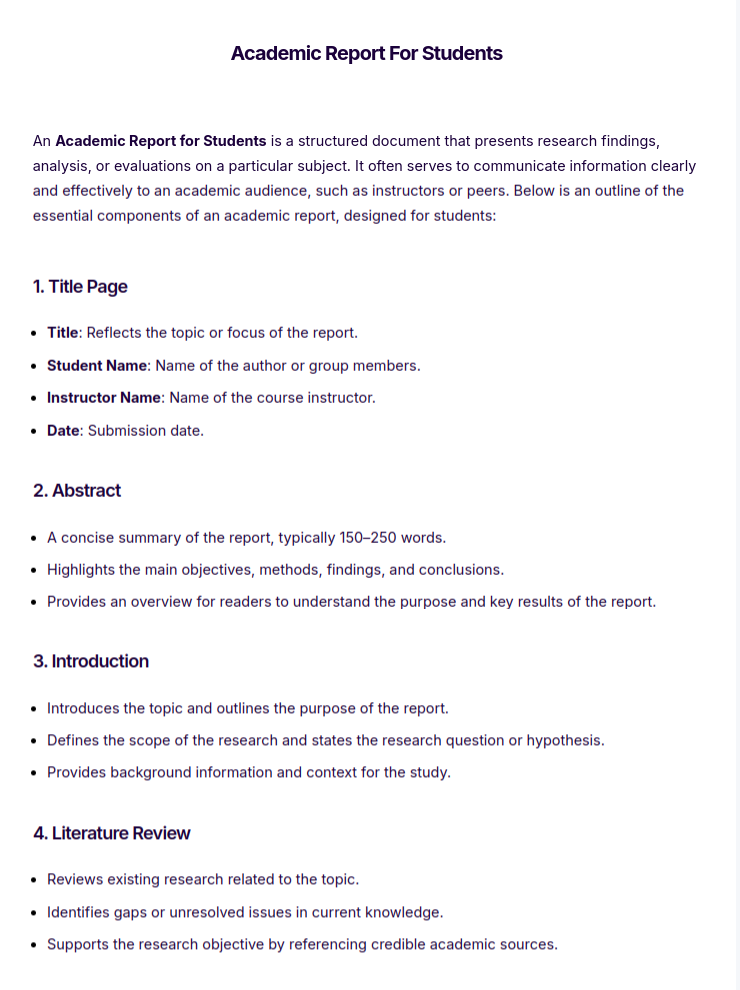
Academic Audit Report
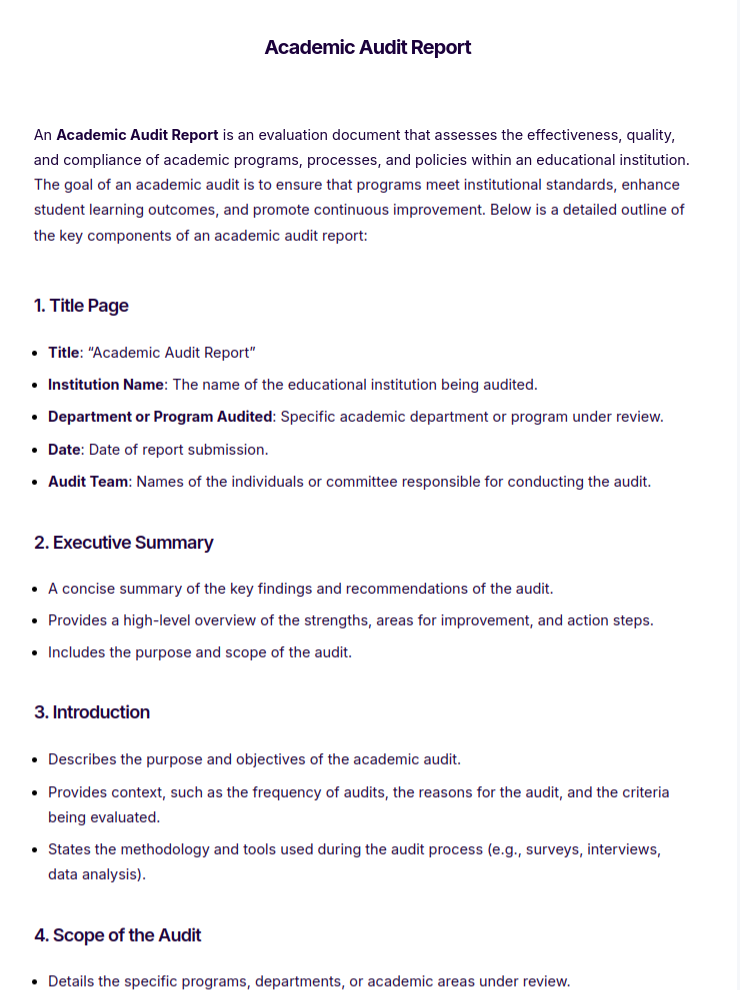
Academic Report For Preschool
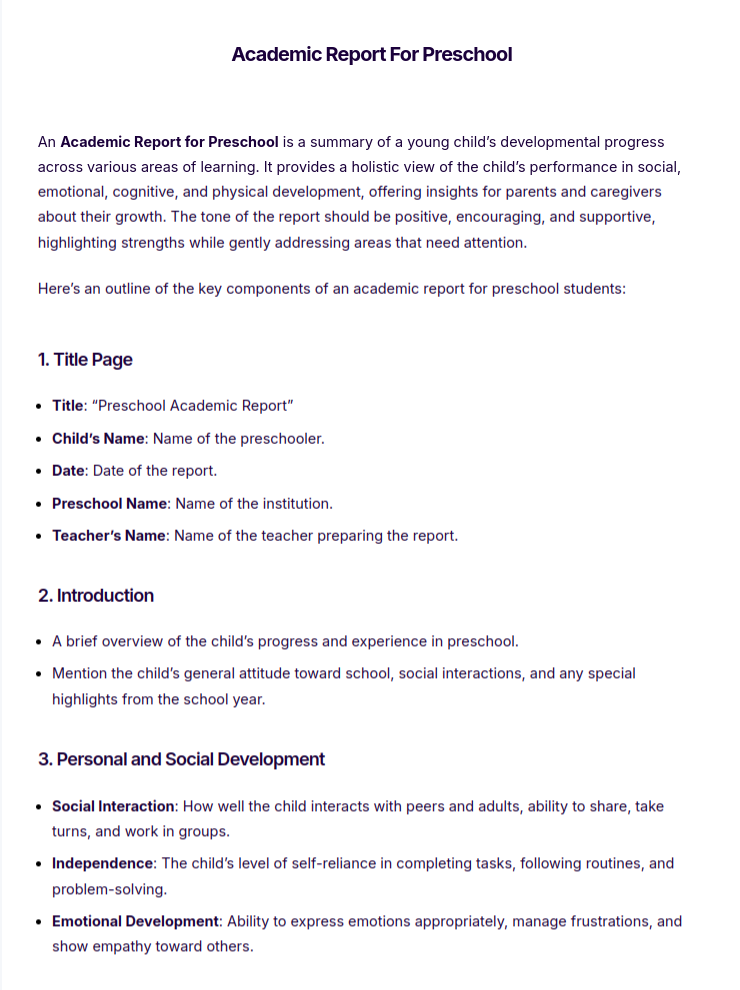
More Academic Report Examples and Samples
Academic Research Report Template
Academic School Program Report Example
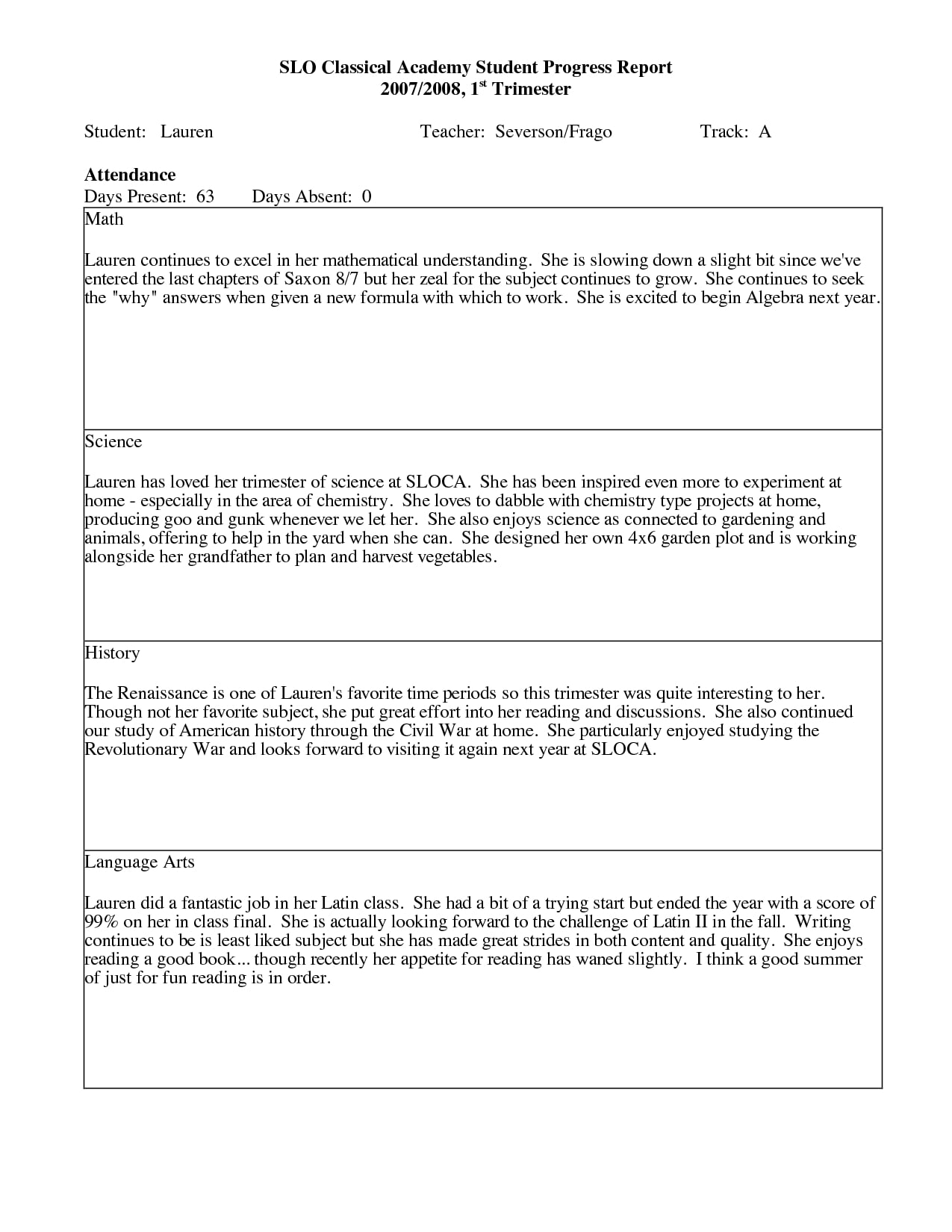
New School Academic Report Example

How to Write Academic Report?
Writing an academic report requires a clear structure, logical flow, and adherence to formal conventions. Here’s a step-by-step guide to help you write an effective academic report:
Understand the Purpose and Audience
Identify the main objective of the report: Is it to analyze, explain, compare, or investigate?
Tailor your report to the audience’s level of knowledge and expectations (professors, peers, etc.).Research and Gather Information
Conduct thorough research on the topic.
Collect data from credible sources like academic journals, books, and articles.
Take notes and organize your findings logically.Structure the Report
A standard academic report includes the following sections:
Title Page
Includes the report’s title, your name, course information, and date.
Abstract (if required)
A brief summary (about 150–200 words) of the report’s purpose, methods, findings, and conclusions.
Table of Contents
Lists all sections and subheadings with corresponding page numbers.
Introduction
States the report’s purpose, the research question or hypothesis, and the scope of the study.
Literature Review (if required)
Summarizes previous research relevant to your topic.
Identifies gaps in knowledge or areas where your report contributes.
Methodology
Describes how you conducted the research.
Includes details on data collection, analysis methods, and any tools used.
Results
Presents the findings of your research or investigation.
Use graphs, tables, or charts to support the data.
Discussion
Interprets the results, explaining their significance.
Discusses how your findings relate to the research question and prior studies.
Conclusion
Summarizes the main findings and their implications.
Provides recommendations or areas for further research.
References
Lists all sources cited in your report in the required citation style (APA, MLA, etc.).
Appendices (if required)
Includes additional material such as raw data, questionnaires, or detailed calculations.Write Clearly and Concisely
Use formal academic language and avoid colloquialisms.
Be objective and base arguments on evidence.
Keep sentences clear and to the point.Revise and Proofread
Check for clarity, coherence, and logical flow.
Ensure grammar, punctuation, and formatting are correct.
Confirm all references are accurately cited.
Importance of Academic Report
The importance of an academic report lies in its role as a formal method of communication within academic and professional environments. Here are key reasons why academic reports are important:
1. Demonstrates Understanding
- Academic reports show a student’s or researcher’s understanding of a specific topic, subject area, or research question.
- It allows you to demonstrate your ability to synthesize information, analyze data, and draw logical conclusions.
2. Promotes Critical Thinking
- Writing a report requires critical evaluation of information, weighing evidence, and forming reasoned arguments.
- It helps develop analytical and problem-solving skills as you address the research question or problem.
3. Develops Research Skills
- Academic reports involve conducting research, gathering data, and assessing the credibility of sources.
- This improves research abilities, including effective literature review, data analysis, and interpretation of results.
4. Enhances Communication Skills
- Writing a report hones your ability to communicate complex ideas clearly and concisely.
- This skill is essential in academic, professional, and technical fields where clear communication of findings is critical.
5. Records and Disseminates Knowledge
- Reports document research findings and contribute to the wider academic community by sharing new knowledge.
- They provide a reference point for future research, facilitating the accumulation of knowledge in a particular field.
6. Supports Decision-Making
- In professional and academic contexts, reports often guide decision-making by providing well-researched evidence.
- They can influence policies, strategies, and future research directions.
7. Evaluates Learning and Progress
- Academic reports are used to assess a student’s progress and comprehension of the material.
- They serve as a formal assessment tool in both educational and research settings, offering insight into a student’s analytical capabilities.
Uses of Academic Report
The uses of an academic report refer to the various purposes it serves within the academic and professional world. Academic reports are essential for:
- Sharing Knowledge: They help disseminate new information, discoveries, and research findings to a broader audience.
- Evaluating Understanding: Academic reports are used to assess a student or researcher’s grasp of a specific topic or concept.
- Supporting Evidence-based Arguments: They present well-researched data that can be used to back up claims or theories.
- Contributing to Field-Specific Advancements: Reports allow researchers to build upon existing knowledge and contribute to advancements in their field.
- Facilitating Informed Decision-Making: Reports provide factual, well-organized information that helps stakeholders in making informed decisions based on evidence.
FAQs
What is the purpose of writing an academic report?
The main purpose of writing an academic report is to communicate the results of research or analysis clearly and systematically. It aims to inform readers about the research process, findings, and implications, contributing to the understanding of the subject matter.
How long should an academic report be?
The length of an academic report can vary depending on the subject and assignment requirements. It can range from a few pages for a short report to several dozen pages for a comprehensive research report or thesis.
Do I need to include an executive summary in my academic report?
An executive summary is typically included in reports for business or management fields. In most academic reports, a detailed abstract serves a similar purpose. However, always check your assignment guidelines to determine what is required.
Can I use personal opinions in an academic report?
Academic reports are typically objective and based on research or analysis. Personal opinions should generally be avoided unless the report specifically calls for reflective or subjective input.
How do I ensure that my academic report is objective and unbiased?
To maintain objectivity, rely on data and evidence rather than personal opinions. Use neutral language and avoid making assumptions. Cite all sources properly and present different perspectives where applicable.
How long should an academic report be?
The length of an academic report can vary depending on the subject and assignment requirements. It can range from a few pages for a short report to several dozen pages for a comprehensive research report or thesis.


